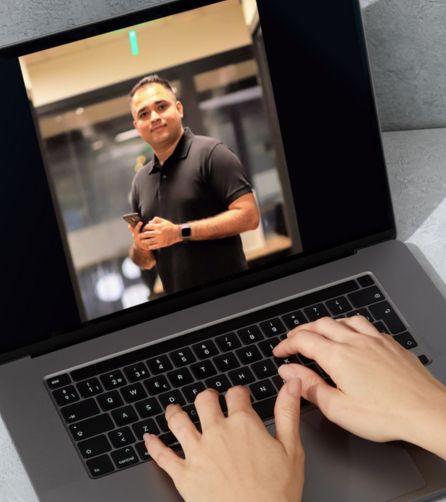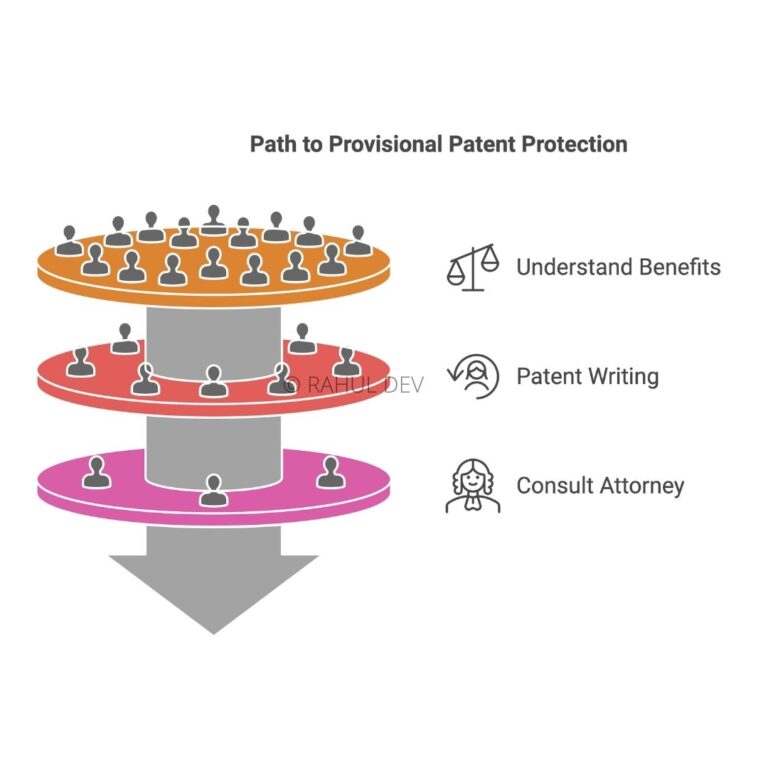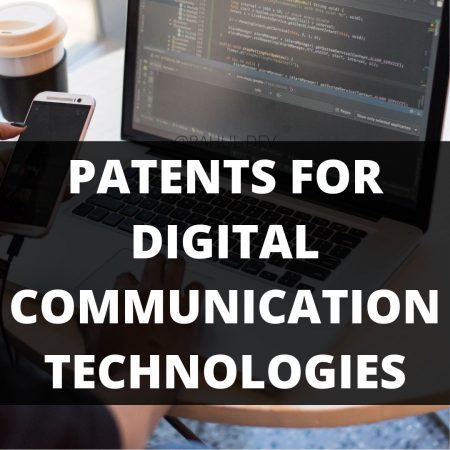Digital Technology Patents
Explore the international patent filing process

Understand Practical Aspects
Understand the role of PCT Patents

Explore the international patent filing process

Understand the role of PCT Patents

Protect your innovations across multiple countries and create strong patent portfolio to boost business valuation
Local and global brand protection through international trademark registrations
Extensive research and business writing for technical whitepapers and B2B content products
Inventors of digital innovations always prepare strong strategy to successfully file international patents for innovative digital communication technologies with strong patent claims. Digital communication innovations face unique patenting challenges in a globally connected marketplace. With rapid technological evolution and varying patent eligibility criteria across jurisdictions, securing comprehensive international protection requires strategic planning and specialized knowledge. This guide provides a step-by-step approach to successfully navigating the complex landscape to file international patents for digital communication technologies.
The process to file international patents presents digital communication innovators with four major challenges to overcome. Rapid Technological Evolution creates a fundamental timing problem. Digital communication technologies advance at unprecedented rates, often making patents obsolete before approval. A patent application filed for a 5G feature in 2023 may become technically irrelevant by 2026 when competing technologies have already emerged. The Patent Eligibility Variations across jurisdictions complicate global protection strategies. Each patent office applies different standards to determine patentable subject matter. The USPTO typically accepts broader software-related claims, while the EPO enforces more rigorous technical character requirements for the same innovations.
In addition to the above, the technical complexity in disclosure requires precise documentation of multifaceted technologies. Digital communication innovations frequently integrate hardware, software, and algorithmic components. Patent applicants who intend to file international patent applications lacking comprehensive technical details risk rejection or insufficient protection scope in patent examination processes.
This article covers following topics:


The modern digital economy presents substantial risks for innovators who fail to secure international patent protection for their technologies. Market Share Erosion occurs when competitors freely utilize unprotected technologies in key markets. The absence of patent protection in China, where wireless communication patents constitute 30% of all patents, allows local competitors to implement and potentially dominate with your innovations without legal consequences. Revenue Loss directly impacts financial performance when innovations remain unprotected in major markets. Companies lacking European patent coverage forfeit significant licensing opportunities with established telecom corporations and lose direct sales potential in lucrative markets.
The Enforcement Challenges create nearly insurmountable obstacles without proper local patent rights. A company with only US patent protection faces complex jurisdictional hurdles when attempting to enforce rights against a Chinese manufacturer, often resulting in prohibitively expensive litigation processes.
A recent analysis of companies who file international patents demonstrate the intensifying competition in digital communications. This field emerged as the leading category at the European Patent Office in 2019, experiencing 20% overall growth. China demonstrated exceptional momentum with a 65% increase in filings, while the US and South Korea showed significant growth at 15% and 36% respectively. A successful patent protection for digital communication technologies by deciding to file international patents requires strategic equilibrium between standards compliance and proprietary innovation protection. The standards engagement provides critical advantages through participation in Standard-Setting Organizations like IEEE or 3GPP. This participation offers visibility into evolving standards and creates opportunities to shape technological development directions. Similarly, the strategic patent positioning identifies protection opportunities for aspects not covered by standards while maintaining necessary interoperability. This approach secures protection for market-differentiating innovations while ensuring compatibility.
In use, the Standards-Essential Patents development creates technologies integral to industry standards, generating licensing opportunities and competitive advantages. These patents typically require Fair, Reasonable, and Non-Discriminatory licensing terms to maintain market access. This balanced methodology leverages specialized expertise in both technical standards and patent strategy, ensuring appropriate protection while maintaining industry compatibility.
Before deciding to file international patents, the selection of an appropriate filing pathway should align with your specific business objectives and timeline requirements. The Patent Cooperation Treaty route provides a unified filing process that preserves your right to seek protection across 156+ member countries. This approach allows a 30-month evaluation period for assessing commercial potential before committing significant resources to expensive national phase entries. The PCT’s primary advantage lies in its timeline flexibility and broader geographic coverage potential.
Direct national filing offers an alternative for situations requiring urgent protection in specific key markets. This approach bypasses the PCT’s longer timeline and provides faster examination in critical jurisdictions. Companies with clear market priorities often select this option for immediate protection.
A hybrid approach combines both strategies for optimized protection. This method leverages the PCT for broader long-term coverage while simultaneously filing directly in critical markets to secure faster protection where immediate commercial activity exists. This balanced strategy addresses both immediate and future protection needs. For example, a telecommunications company might implement the PCT route for most global markets while simultaneously filing direct applications in the United States and China. This approach secures faster protection in these commercially critical jurisdictions while maintaining long-term flexibility for other markets.
In addition, when looking to file international patents for digital innovations, an effective claim drafting requires careful consideration of various jurisdictional requirements to ensure robust protection across different patent systems. A strategic claim hierarchy provides comprehensive protection through multiple layers of defense. The patent application should include broad independent claims that establish the widest reasonable protection scope. These should be supported by progressively narrower dependent claims that provide fallback positions if broader claims face validity challenges during examination.
Moreover, jurisdiction-specific requirements necessitate tailored claim language when inventors decide to file international patents. United States patent applications can often maintain broader claim scope, while European applications typically demand greater technical specificity and problem-solution alignment. Japanese applications benefit from narrower, more detailed claims that clearly define the technical contribution. In use, multiple claim categories enhance protection scope for digital communication technologies. Applications should include device claims, method claims, system claims, and computer-readable medium claims where appropriate. This comprehensive approach ensures protection extends to different implementation aspects of the same core innovation.

As a business coach and thought leader, I cannot emphasize enough the importance of innovation, new software patents, mobile apps, and patents for tech companies, startups, and entrepreneurs. The world is rapidly evolving, and staying ahead of the curve is vital for success. Embracing technological advancements such as blockchain and AI can unlock unprecedented opportunities, streamline operations, and propel businesses into the future with competitive valuation via intangible assets.
Click Here for AI Startup Valuation Guide.
For instance, blockchain technology can revolutionize supply chain management and secure data sharing wherein innovative business models are explained to the audience via technical whitepapers, while AI can automate and optimize decision-making processes. Mobile apps are no longer just a luxury; they have become essential tools for engaging customers and offering personalized experiences. Furthermore, securing digital innovation patents is crucial for protecting intellectual property, fostering innovation, and maintaining a competitive edge. By investing in these areas, businesses can position themselves as industry pioneers and pave the way for a prosperous future after thoroughly conducting the due diligence and reviewing the legal opinion letters, which in case of digital assets can assist in determining the tokens as utility assets or coins as utility tokens before listing the assets at an exchange.
Our team of advanced patent attorneys assists clients with patent searches, drafting patent applications, and patent (intellectual property) agreements, including licensing and non-disclosure agreements. Advocate Rahul Dev is a Patent Attorney & International Business Lawyer practicing Technology, Intellectual Property & Corporate Laws. He is reachable at rd (at) patentbusinesslawyer (dot) com & @rdpatentlawyer on Twitter.
Quoted in and contributed to 50+ national & international publications (Bloomberg, FirstPost, SwissInfo, Outlook Money, Yahoo News, Times of India, Economic Times, Business Standard, Quartz, Global Legal Post, International Bar Association, LawAsia, BioSpectrum Asia, Digital News Asia, e27, Leaders Speak, Entrepreneur India, VCCircle, AutoTech).
Regularly invited to speak at international & national platforms (conferences, TV channels, seminars, corporate trainings, government workshops) on technology, patents, business strategy, legal developments, leadership & management.
Working closely with patent attorneys along with international law firms with significant experience with lawyers in Asia Pacific providing services to clients in US and Europe. Flagship services include international patent and trademark filings, patent services in India and global patent consulting services.
Global Blockchain Lawyers (www.GlobalBlockchainLawyers.com) is a digital platform to discuss legal issues, latest technology and legal developments, and applicable laws in the dynamic field of Digital Currency, Blockchain, Bitcoin, Cryptocurrency and raising capital through the sale of tokens or coins (ICO or Initial Coin Offerings).
Blockchain ecosystem in India is evolving at a rapid pace and a proactive legal approach is required by blockchain lawyers in India to understand the complex nature of applicable laws and regulations.